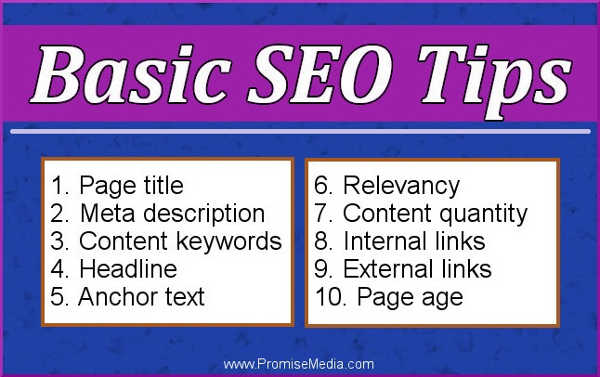Add SEO to URLs for Better Search Rankings

Adding SEO to URLs may result in better search engine rankings. At the least, it tells search engines more about an article.
It also may lead to more clicks from search engine users.
Do a search on Google, Bing and Yahoo! and look at the results. All three show a similar display consisting of three elements — the document’s title, meta description and URL.
The URL, also known as the Uniform Resource Locator, is the exact path of the document including the domain name and file name. For example, the path of this article is https://www.promisemedia.com/organic-marketing/add-seo-to-url-to-maximize-search-results
The keywords used in the search are bold wherever they are displayed in those three elements. This is an important fact because bold type attracts the eye.
In Google results, the document title has the largest font and for that reason gets the most attention by the searcher.
The meta description draws the eyes because it has more information about the link. It helps the searcher judge whether or not it deserves a click.
The URL in green type lies between the title and description. It is not as important as the other two. But the existence of bold keywords will give the search another reason to click on the link.
Search engine optimization isn’t entirely about rankings. It’s also about presentation to the searcher and increasing the odds of getting that click compared to all of the other competition on the search result page. These days, there is plenty of competition for almost all content topics.
Poor URL = Lost SEO Opportunity
Not adding SEO to URLs leads to a lost opportunity. But it’s an easy mistake to make.
The writer or editor puts a test headline into a content management system. The CMS creates a URL from that headline. The writer or editor goes on to write the article, edit it, add images, optimize everything, etc. The original URL may be forgotten.
Once the article goes live, the search engines index it and have it for good. If a better URL comes to mind, the only way around the indexed URL is for the publisher to create a new one and use a redirect from the old location to the new one.
But it’s entirely possible that the search engines won’t update the index with the new URL and hold onto the old one. They are getting so big that they are becoming stingy about making changes.
The end result is a URL in search results without bolded keywords. Maybe it’s a small loss, but it’s still a loss. These days there is so much competition that every edge counts.
It is widely believed that SEO plays a role in the title and the URL but not the meta description. Too often, site developers focus on the title, meta description and page factors while paying little attention to the URL. Bold keywords in the meta description suggest otherwise.
Tips on Adding Keywords to URLs

Many popular content management systems provide a way of creating and editing the URL of an article. In that case follow a few simple steps:
- Define the keyword phrase, with two to three words being ideal. A long keyword phrase in the URL will be cut off from the display of search results just like overly long titles and meta descriptions get cut off.
- If possible, use only that phrase as the URL title to keep it simple and easy to read.
- If the actual title is long, try to put the keywords at the beginning of the URL.
- Use natural language in the title. But also make sure it accurately reflects the topic of the article.
- Separate each word with hyphens and not underscores.
As Google’s Search Console says, “Consider using punctuation in your URLs. The URL http://www.example.com/green-dress.html is much more useful to us than http://www.example.com/greendress.html. We recommend that you use hyphens (-) instead of underscores (_) in your URLs.”
One more suggestion: Avoid using highly similar keyword phrases in URLs and page titles in two different articles.
The search engines might rank one article up and the other down if the titles and URLs appear too similar, even if the page content is substantially different.
Adding SEO to URLs is a small but useful step in building a better presence in search engines.



 Promise Media offers online business tips and best practices for content-rich websites.
Promise Media offers online business tips and best practices for content-rich websites.